Elijah Abel(s), First African-American to be ordained an Elder and member of the Quorum of the Seventy of LDS/Mormon Church
Introduction
Text-to-speech Audio
Images
W. Kesler Jackson bio on Elijah Abel
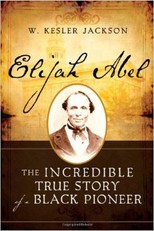
undated photo of Elijah Abel
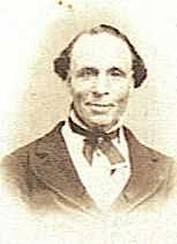
Russell Stevenson bio on Elijah Abel
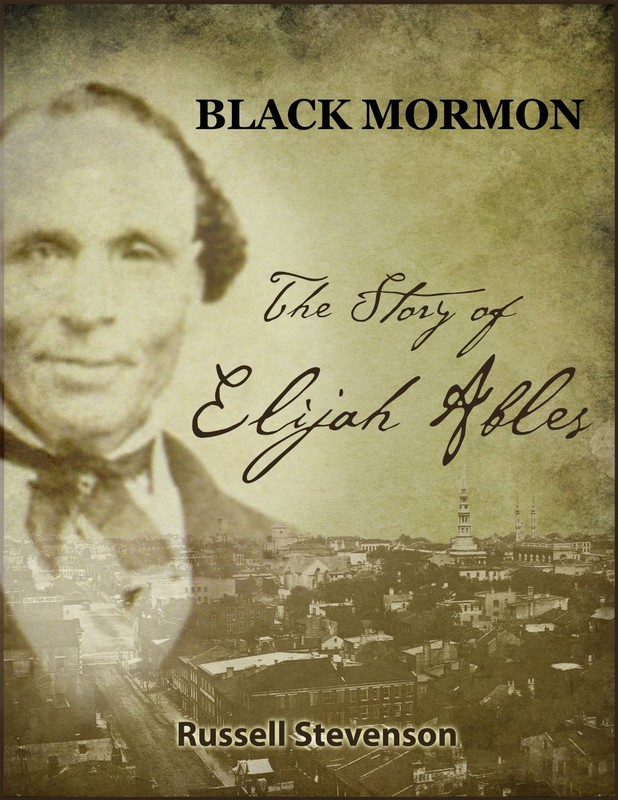
Back of monument
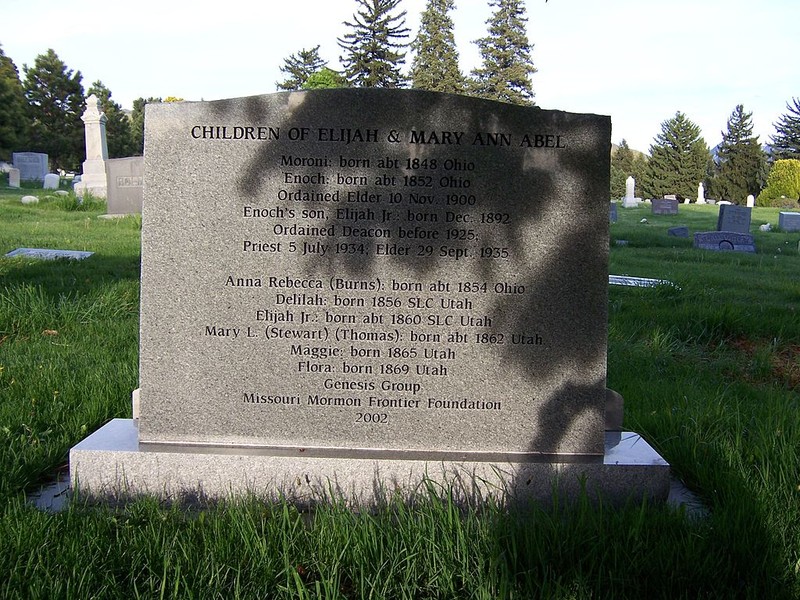
Front of monument
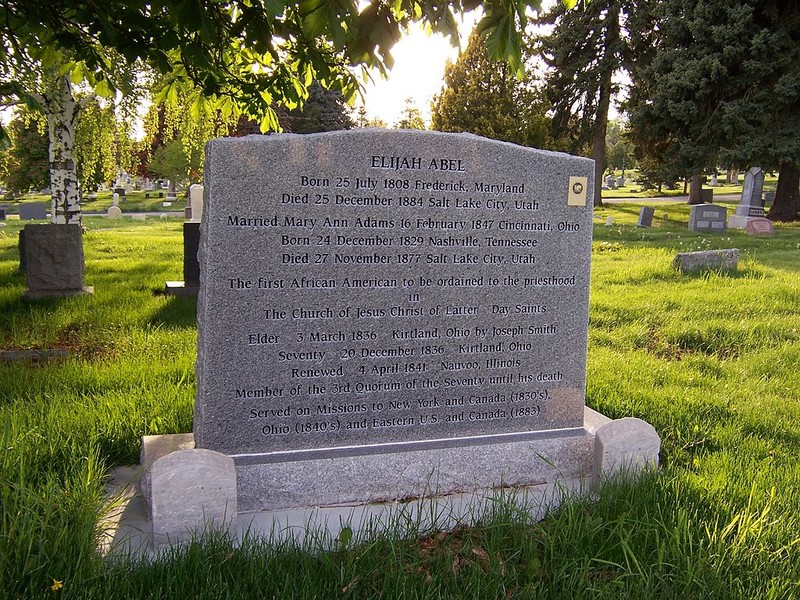
Backstory and Context
Text-to-speech Audio
Not a whole lot is known about the birth and
formative years of Elijah Abel. It is commonly believed that he was born a
slave, to Andrew and Delilah Abel, July 25, 1808 (some sources have it in
1810), his parents also likely to be enslaved as well. Most sources state that
he was born in Frederick Maryland, while some others have his place of birth in
neighboring Washington County, Maryland. The creator of this entry is going
with the majority until a firm conclusion to this mystery can be had. There
is some evidence that he may have escaped into Upper Canada using the
Underground Railroad. However, some sources have Elijah Abel as being born a
freeman that moved to Canada for various reasons, one being a fear that be
would become enslaved, despite being born free. There is no evidence showing the exact location where he was born nor any reference to the home or what it looked like as can be found today.
Not known was how Elijah Able heard about the
newly restored Church of Christ (later The Church of Jesus Christ of Latter-day
Saints), but it is likely he heard about it via the preaching of missionaries
sent to Upper Canada in the late 1820s, early 1830s. Nonetheless, Elijah left
Canada and moved to Kirtland, Ohio in 1832, which has become the new
headquarters of the young church. In September of the same year, he was
baptized by Ezekiel Roberts and later married Mary Ann Adams, another African-American
also recently baptized into the church. On March 3, 1836 he was ordained
to the office of Elder, which has him being the first African-American to hold
the Melchizedek, or Higher Priesthood, of The Church of Jesus Christ of
Latter-day Saints. There is a debate as to who ordained him: Either he was
called and ordained by the Prophet Joseph Smith Jr. himself or he was called by
Smith and ordained by Zebedee Coltrin. In either 1838 or 1839, he was
called as a member of the Third Quorum of the Seventy, which was not at the
time considered a calling of being a General Authority, but a quorum with the
emphasis on missionary work.
The debate as to whether he was born a slave or
not stems from the church practice at the time of Abel's baptism (1832), to obey
and follow the law where ever the church was established and where ever its
missionaries were sent. This adherence to the law while in South became
contentious, since Southerners saw the LDS church as an abolitionist church and
laws at the time in the South forbade baptisms of slaves by outside churches.
So, the church "compromised" that it would not baptize without the
master's consent as well not ordain a slave to the priesthood, to alleviate
fears of hidden abolitionist-insurrection plans by the church in the South and
in Missouri. If Abel was indeed a slave, he would have needed his master's
consent, yet he was technically a fugitive slave. And if a runaway slave, the
case is that since it had been a number of years and no evidence of his master
seeking him out, he was free by the fact he was in the northwest of American
and had lived in Canada for a time and thus free to be baptized If he was
born free, then no problem. No matter the circumstance, he was baptized,
ordained into the priesthood and sent out as a missionary.
While in Kirtland he helped build the Kirtland
Temple, the first LDS/Mormon Temple constructed, with his skill as a carpenter.
He gained this skill while either living in Frederick or while in Canada. From
1836 to 1842, he served missions in Ohio, New York and Canada. It is at the
year of 1842, he moved to Cincinnati, Ohio to help establish the church there
by preaching to his fellow African-Americans and met Mary Adams and married her
in 1847. The same man who baptized him, Ezekiel Roberts, officiated the
marriage. Between 1839 and 1842, he lived in Nauvoo, Illinois when the church
moved there upon being forced to leave both Kirtland and Missouri (the latter
by physical force following the Extermination Order given by Governor Lilliburn
Boggs and the multiple raids on Mormon settlements and one massacre) and built
Nauvoo from the ground up. While in Nauvoo, Abel served as carpenter again for
the Nauvoo Temple and as a mortician (at the urging of Joseph Smith). As false
charges followed Smith into Nauvoo and sometimes he was betrayed and sent to
jail, Abel served in at least one rescue mission to get the Prophet out while
illegally incarcerated by mobs. When Joseph Smith and Hyrum Smith were
murdered in jail, June 27, 1844, Abel was reported to be the undertaker for the
bodies.
The Abel family stayed in Cincinnati in the
home, incidentally enough, of members to a break-off church that
formed following the death of Joseph Smith, they were referred to as the
Williamite Church of Jesus Christ of Latter Day Saints. "Williamite"
referring to William Smith, an oft-times estranged brother of Joseph Smith that
believed he was the rightful succesor to his brother as prophet. It is apparent
that the Abels were active will the origninal during this time still.
In 1852 they joined the Appleton Harmon Pioneer Company to the Salt Lake
Valley to be with the church at its new and permanent headquarters. Abel was
aware that offically under Brigham Young that Blacks and other minorities were
to be denied the priesthood by accordance of revelation of God until it was
appointed the ban to be lifted. Despite this, he chose to stick with the church
and likewise his ordination as Elder and a a member of the Seventy was not
taken from him. The boys born into the family were even ordained as priests and
holding the Lesser Priesthood, normally referred to as the Aaronic Priesthood.
One some would be ordained an Elder in 1900 and a grandson as well in 1935 (for
reasons unknown while the ban was in place) After arriving in the valley,
he once again helped as a carpenter for the Salt Lake Temple and he and his
wife managed the Farnham Hotel in the Salt Lake City area.
Although he was denied to receive his endowments
in 1853, he still stayed and worked with the church. By proxy, sometime in the
1930s, Abel received his endowment and other saving ordinances. He served
his last mission with the church in early 1884 to Canada, but returned being
very ill. He died Christmas Day the same year. He is buried in the Salt Lake Cemetery.
In 2002, the deteriorating headstone was removed and Elder M. Russell Ballard
of the Twelve Apostles dedicated a monument placed in its stead.
